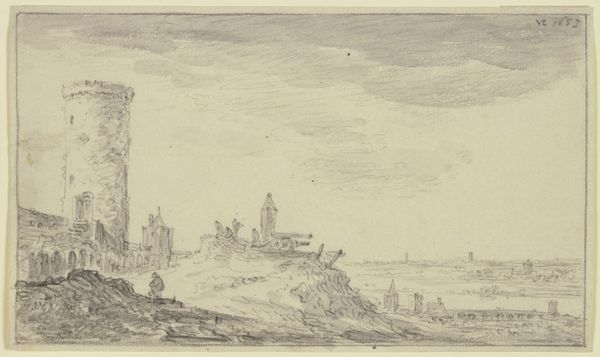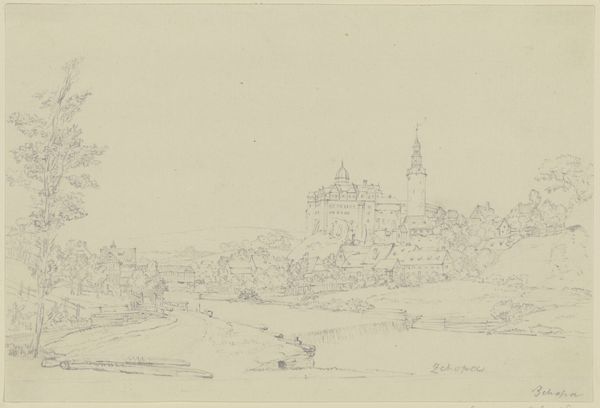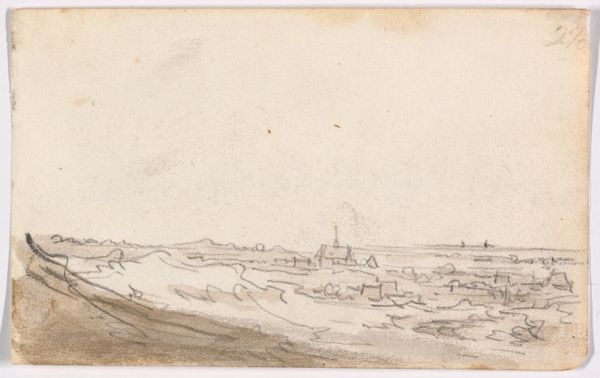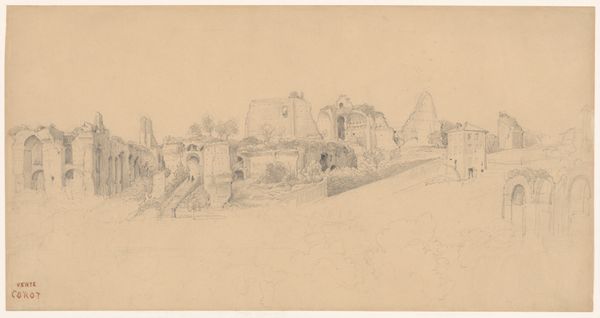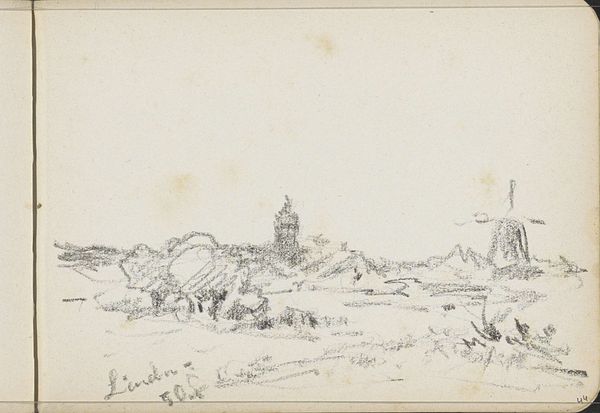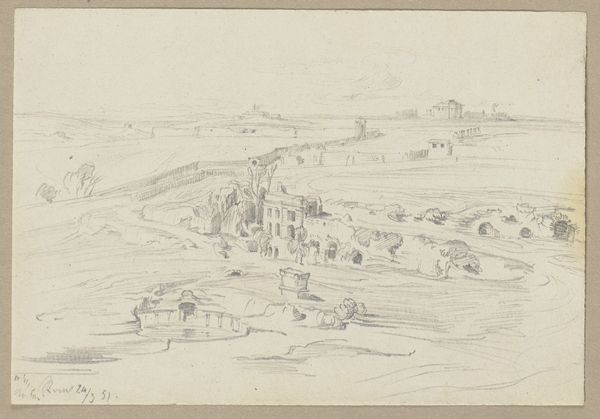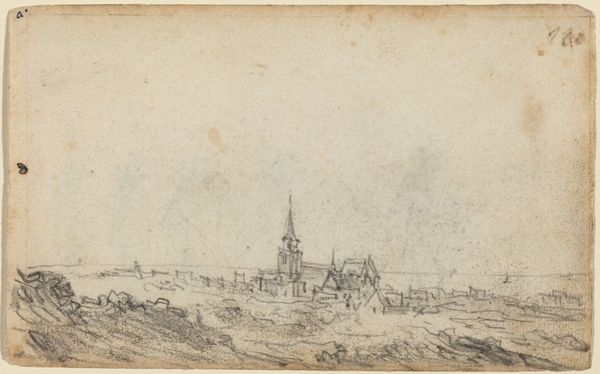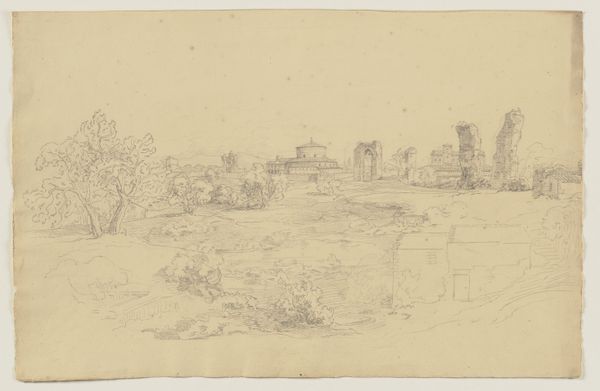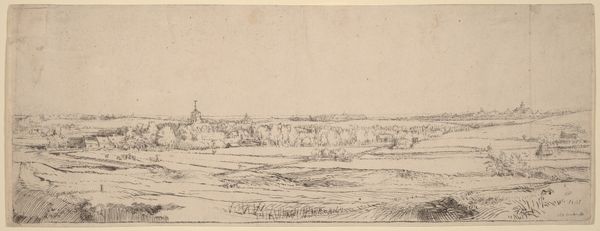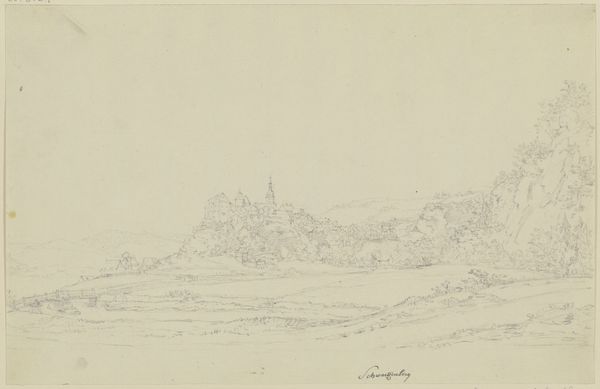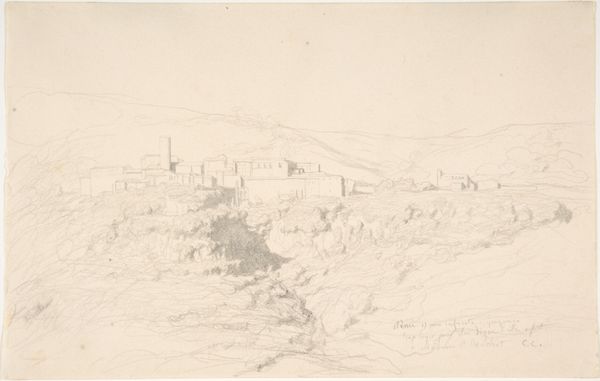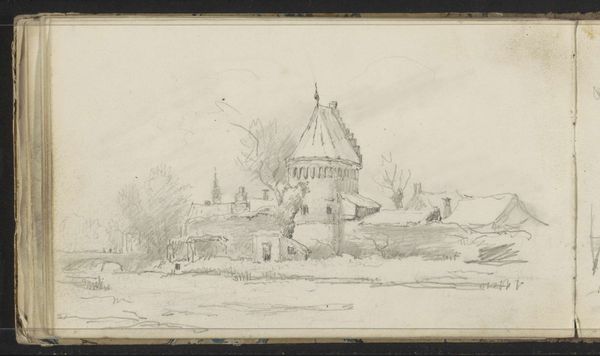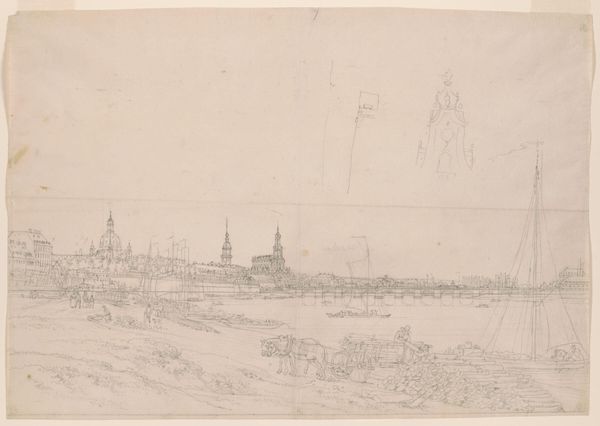
drawing, paper, pencil, architecture
#
drawing
#
landscape
#
paper
#
pencil
#
sketchbook drawing
#
architecture
Copyright: Public Domain
Curator: We're standing before Adolf Hoeffler's drawing, simply titled "Kronberg," created with pencil on paper and now residing in the Städel Museum. Editor: It’s remarkably delicate, almost ethereal. There’s a certain melancholic mood conveyed through the artist's careful pencil work. Curator: Indeed. The composition employs a limited tonal range, enhancing the overall structural elegance. Note the distinct layering, creating depth as our gaze moves from the village buildings to the imposing castle on the hilltop. The artist clearly articulates the varying architectural forms, too. Editor: That elevation, that visual dominance of Kronberg—what did this imagery represent historically and politically for its inhabitants, its beholders, during the moment of Hoeffler's sketch? Was this a deliberate rendering of power and social hierarchy? Curator: One could read the castle's prominence as representative of established power, certainly. But let us not disregard the linear precision throughout. The lines articulate form but also evoke a sense of timelessness, inviting contemplation beyond immediate socio-political contexts. Editor: Yet, isn't even "timelessness" a construct? Consider the artist's positionality, the lens through which this particular vantage point was chosen. And who were Hoeffler's patrons? What was the intention in depicting this specific place with such an aesthetic quality? Curator: A valid consideration. Nonetheless, observing the formal relationships remains crucial: how each structure relates to the others in terms of shape, scale, and placement. Look at the contrasting verticality of the central tower against the lower, sprawling houses below. The interplay creates dynamic visual interest independent of social readings. Editor: While I agree with your appreciation for his technical mastery, I find the historical background invaluable. Without that framework, don’t we risk reducing artwork to pure decoration—ignoring its potential cultural messages? Think of who *isn’t* pictured. What narratives are rendered invisible by that particular focus? Curator: I maintain both analyses enrich our understanding, even when interpretations differ. Ultimately, it's the convergence of form and context that generates dialogue. Editor: A productive tension, surely. Hoeffler gives us a meticulously composed world, but its silences perhaps speak just as loudly.
Comments
No comments
Be the first to comment and join the conversation on the ultimate creative platform.
